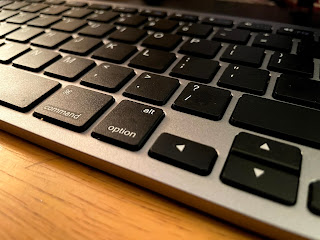One successful solution that I’ve used in the past with my clients (and myself) is reverse dieting. Huh? Yes, reverse dieting is a method of slowly and strategically increasing food intake over the course of several weeks or months, typically increasing your calories by 50-100 calories per week. This is utilized to increase your metabolism. This method was created by renowned prep/physique coach Layne Norton as a way of mitigating the damage that athletes take over the course of a season, and giving them the ability to regain conditioning easier. In this article we will look at what reverse dieting is, the adaptability of reverse dieting, and who should be reverse dieting, as well as how to reverse diet.
 |
| My Spreadsheet |
About two years ago I was experimenting with time-restricted eating along with a severe caloric deficit, over the course of a couple of months, at varying intervals. This presented me with a major problem, which was my inability to reintegrate regular meals or calories. This dieting regime begged the question: How the heck do I eat??? I did some research and found the solution through reverse dieting, which is increasing calories over the course of weeks. Tracking my macros/calories/ratios on a spreadsheet showed how much and when I was eating. This gave me the ability to lose a good amount of weight, retain muscle, and feel amazing. In this article we will look at what the reverse diet is, why it’s beneficial, who it is for, and how it works.
My favorite thing about following directions is the magic formula: do X, Y, and Z...then there’s the magic leap to actually making it happen. How do we make the magic happen with reverse dieting? We all know the basic premise of calories in and calories out, and having to be in a caloric deficit to lose weight. If you want to gain weight you have to be in a caloric surplus, and if you want to lose you have to cut calories. A number of other factors come into play, including food choices, activity level, calories burned while working out and at rest, stress levels, and the quality of food and nutrients absorbed, as well as appetite. If you are in a caloric deficit for a long period of time, several physiological reactions occur. Your BMR (Basal Metabolic Rate) is reduced, low-energy exercise becomes more difficult (meaning less calories burned), you may have reduced energy for any activity, and you have slower digestion. Due to these systemic responses you need less calories to maintain your weight, and if you’re seeking even more weight loss then you require even less calories.
Reverse dieting is basically metabolic adaptation (the magic formula), meaning it gets your metabolism to start working to your advantage. When you make the changes your BMR will raise more energy, drive an increase in work capacity, and burn calories outside of exercise – plus your digestion will go back to normal. The caveat is that calories have to be added back in slowly, and there are some BMR percentage numbers that can be above your maintenance number while still losing weight. Say what???
 |
| Reverse dieting is a thing??? |
Remember the word s-l-o-w-l-y. Each person’s body adapts differently, and there is no perfect answer. Have patience with yourself, and recognize that each person is burning a different amount of calories outside of exercise. As we age our metabolism will slow down naturally, so different protocols have to be used with different age ranges. The biggest issue is compliance with tracking your food, because have to be reasonably sure about what your calorie & nutrient counts look like. This is an imperfect practice to say the least, and we are looking at small changes daily. Some key factors are eating around the same amount daily, tracking/measuring your food and daily activity, and watching the bottom line. Consulting your primary physician is also recommended practice, so that any medical conditions can be taken into account. No diet/regime is for everyone, and if it’s not working then you need to stop.

Let’s assume you have now decided to try this out, whether it is out of medical necessity, personal confidence, regaining energy, or a myriad of other reasons. It is important to have an intimate knowledge on how the process works. Let's take a look at one way you can go about implementing this process. Phase One is to decide how to track what you are eating either through calories/macros or through the portion method. The part that is non-negotiable is the data – how you go about getting it is completely up to you. Phase Two is calculating what your maintenance calories are by using an online calculator Calculator Link. As this is not an exact science, experiment with the maintenance number prior to adding calories, watch for weight gain or loss, and adjust accordingly. In using both methods, calculating and experimenting will give you a personalized number of calories. Phase Three is adjusting your macro nutrients to be more in line with recoup numbers, which will give you a range on your protein levels. As this a re-composition method protein is king; the range for men is 0.65g to 1.5 g per lb of body weight and 0.6g to 1.35g per lb of body weight for women. This will be driven by your goals. Your carbs and fats will be driven by what you want your long-term meal plan to look like.
If you are interested in learning more about topics like this and other health and fitness related topics, you can follow this blog or sign up for my newsletter mailing list.




